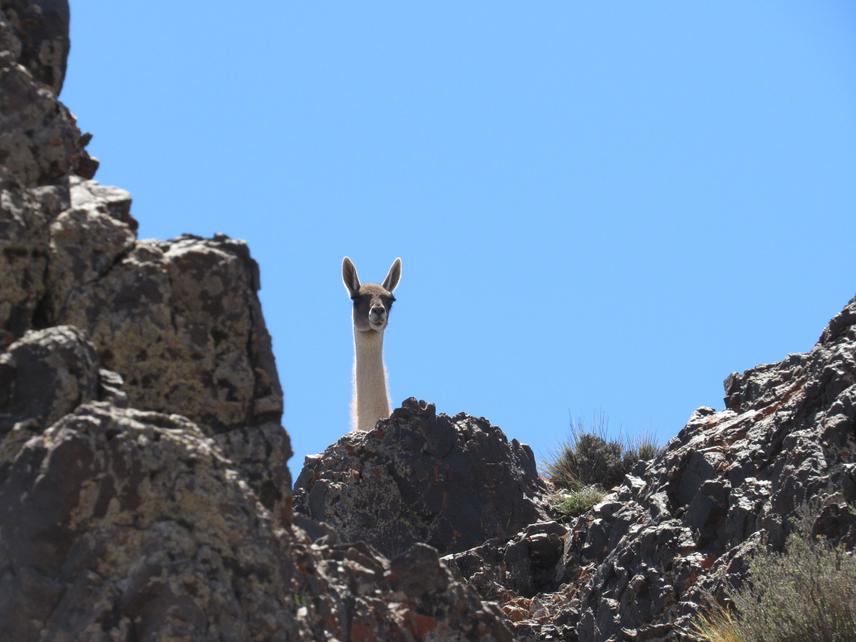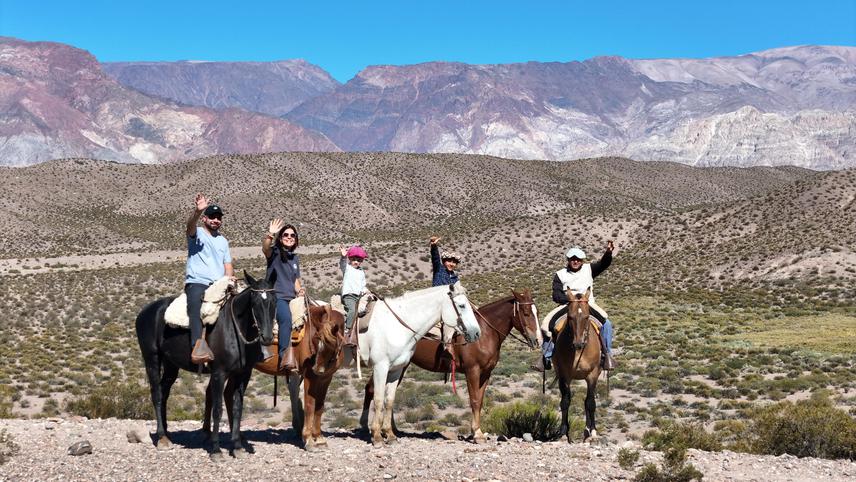Agustina Di Pauli
In 2022, as part of the Uspallata National Park Project team in Mendoza, Argentina, we documented the presence of the Andean cat (Leopardus jacobita) in the region for the first time. This feline is one of the five most threatened in the world. This discovery resulted from a collaborative effort involving various institutions, organizations, and local community members. The goal is to deepen collaborative research on the Andean cat in Uspallata, gaining new insights into its habits to design effective conservation strategies. Additionally, to increase active participation from the Uspallata community in this process.

The guanaco (Lama guanicoe) is one of the iconic animals of Uspallata, alongside the puma, the Andean rhea, and the condor. ©Gisela Bruhn/Natura Argentina.
To achieve these objectives, camera traps will be installed, and we will work closely with the local community, integrating their diverse knowledge to strengthen the commitment to native wildlife conservation. The results of this project will serve as a foundation for conservation efforts aimed at creating Uspallata National Park, which will protect a significant portion of the Andean cat's habitat. Uspallata is a critical area for the species' survival, with the population in this Andean region classified as critically endangered in Argentina.

Horseback riding with a ranching family in Uspallata as part of the National Park creation project. ©Natura Argentina.
Header: Collection of biological samples from medium-sized fields at a latrine site in Uspallata. ©Natura Argentina.